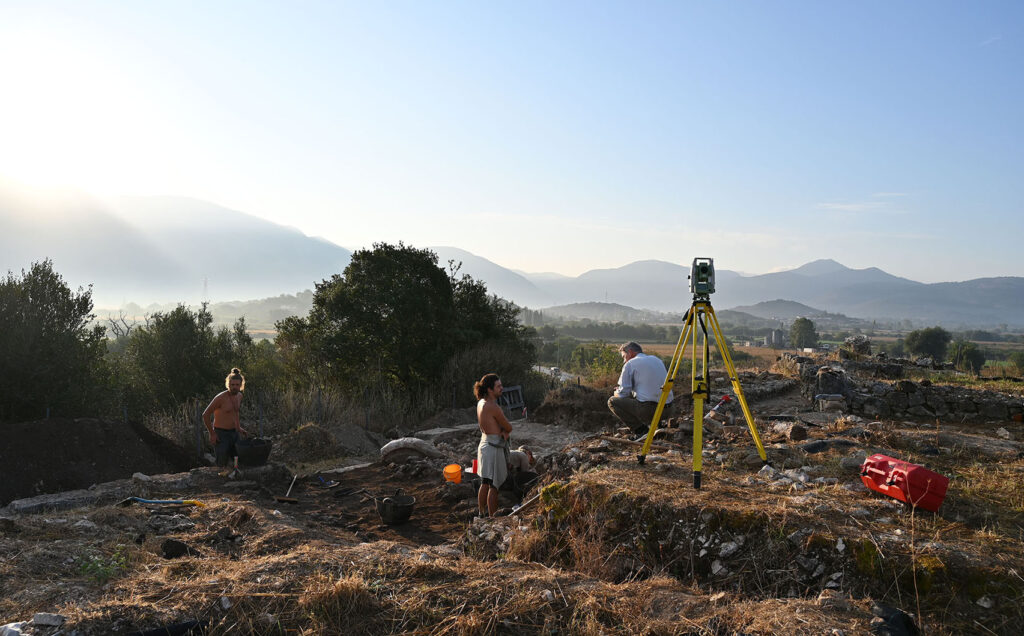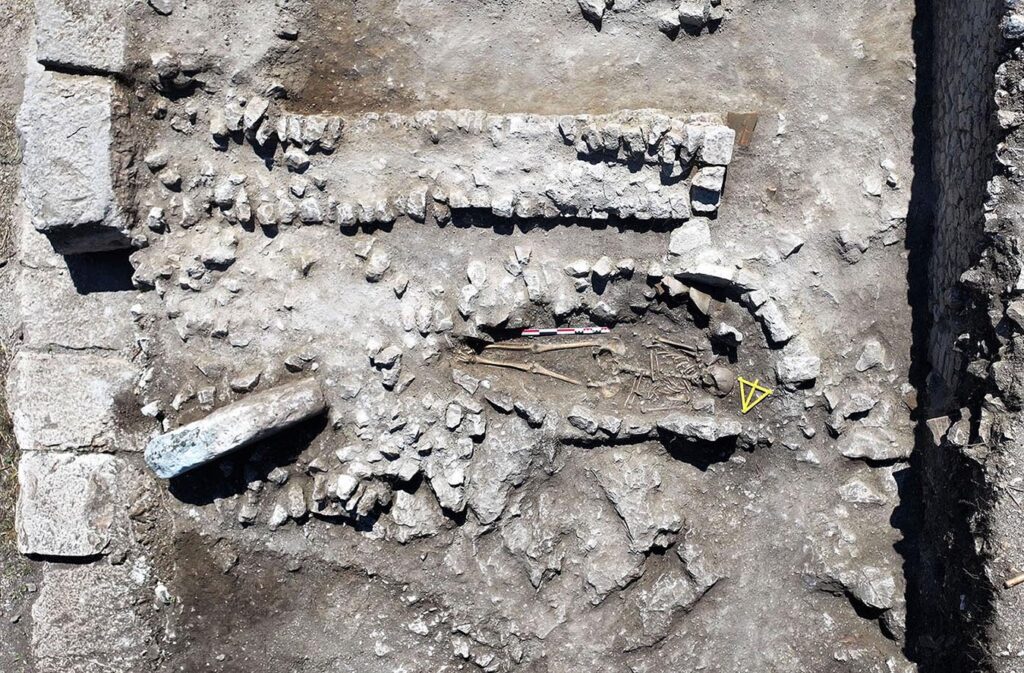The Koroni Tsoumbari excavation is a three-year synergasia project directed by Björn Forsén (University of Helsinki) and Georgios Riginos (Ephorate of Antiquities of Preveza). The aim of the project is to enlarge our knowledge of the important Hellenistic and Early Roman remains located on the low hill Tsoumbari at the southernmost edge of the modern village Koroni and next to the Kokytos river.
Koroni Tsoumbari was mentioned by Dakaris already in 1960 and cleaned from vegetation and topsoil in 2008 by a team directed by Georgios Riginos. The team uncovered the foundations of a rectangular Early Hellenistic building (measuring ca. 20×14 m), Roman and post-Byzantine finds, as well as remains of wall paintings still attached to Roman walls.
Tsoumbari hill offers a great view all the way towards Ephyra/Nekyomanteion and Glykys limen ca. 4 km towards the southwest and Kastri/Pandosia ca. 3 km towards the southeast. The hill also constitutes a crossing point between the road leading from Kastri towards Margariti and the road leading from Ephyra/Nekyomanteion into the Kokytos valley further in the northeast.

After the field seasons in 2024 and 2025, the rectangular Early Hellenistic building turned out to be a fortification. The walls were constructed by large blocks up to a height of ca. 4 m, above which mudbricks were used. The fortification was abandoned during the early second century BC, whereafter a small Early Roman villa was constructed inside its ruins probably during the late second century BC. This new villa reminds in many ways of the villa of Agios Donatos that was surveyed and excavated by the Thesprotia Expedition in 2005-2009; its walls are also built in opus incertum and partly decorated by second Pompeian style wall paintings. The villa constructed inside the Hellenistic ruins was destroyed by an earthquake around the mid-first century AD.

The Koroni Tsoumbari excavation has furthermore recorded previously unknown remains of a Bronze Age settlement and an Archaic sanctuary below the Hellenistic and Early Roman buildings. There are also signs of Ottoman activity at the site, represented by the foundation of a building (a mosque?), surrounded by graves.
